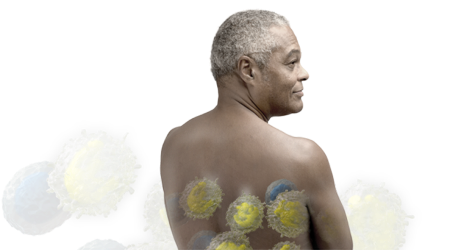Breaking down CTCL
Cutaneous T-cell lymphoma (CTCL) is a type of cancer called a lymphoma that affects a type of white blood cell called a T cell. Symptoms of CTCL appear on the skin, making it easy to mistake for a skin condition. It can commonly be misdiagnosed as eczema or psoriasis. Let’s take a closer look at the name to understand more.
Cutaneous
Related to or affecting the skin
T Cell
A white blood cell that is part of your immune system—your body’s way of fighting germs
Lymphoma
A type of cancer that affects the lymphatic system, which is part of your immune system
CTCL is cancer, but it's also rare
Many people haven’t heard of or met someone with CTCL before getting a diagnosis. Though CTCL is rare, you are not alone.
Like many rare diseases, CTCL is commonly misdiagnosed. It can sometimes take a while before a correct diagnosis is reached—and the path to diagnosis often includes seeing many different types of doctors.

Each year in the United States, CTCL is diagnosed in about 3,000 people

In the United States, a rare disease is defined as a condition that affects fewer than 200,000 people

Approximately 16,000 to 20,000 people in the United States are estimated to be living with the most common type of CTCL
But remember, you are not alone. Advocacy organizations exist to connect you with the information you may need, as well as opportunities to meet other people diagnosed with CTCL.
“When I was diagnosed I thought I was alone, but I was able to find and connect with other patients. It was reassuring and gave me hope.” — Carole, a real patient living with Mycosis Fungoides
Common types of CTCL
Everyone who has CTCL experiences it differently. There are several types of CTCL, but let's look at the differences between 2 types of CTCL:
Knowing your type can help you understand your CTCL.



